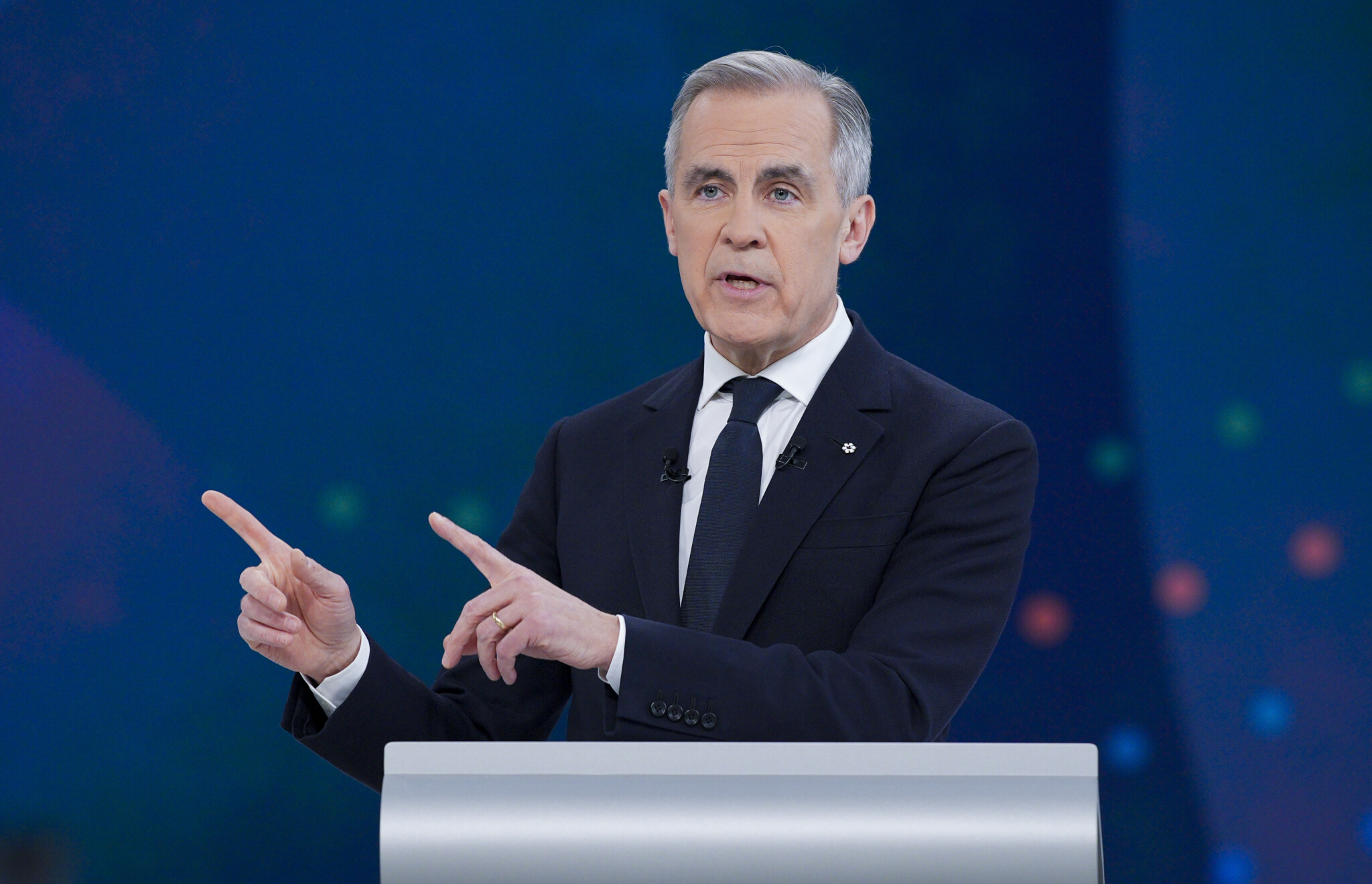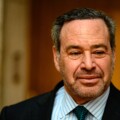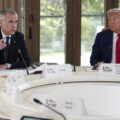If there were any questions about what kind of government Mark Carney wants to lead, the freshly elected prime minister sought to put them to bed at his first press conference yesterday.
“I’m in politics to do big things, not to be something,” Carney told reporters on Friday, four days after winning a strong minority in Parliament. “Now that Canadians have honoured me with a mandate to bring about big changes quickly. I will work relentlessly to fulfil that trust.”
It was a welcome display of determination for a country that had grown disillusioned with the previous Liberal government’s ability to get big things done—particularly on economic matters. And I suspect the nation will probably continue to temper its expectations, even with the change in tone, at least until we see concrete things actually getting done.
After all, Carney inherited a very left-leaning Liberal Party committed to social programs, big spending, and climate activism—an agenda he largely embraced during the campaign, and one that business remains wary of.
Yes, he’s pledged to kick-start private sector investment by streamlining regulation and leveraging the government’s balance sheet to build infrastructure and support the resource sector.
But we’re all guessing how he will weigh conflicting priorities.
His platform reads like a tribute to Third Wayism—the governing ideology of leaders like Bill Clinton and Tony Blair. It offers gestures and promises across the political spectrum but is light on trade-offs.
The business community is cautiously optimistic, but also concerned about the compromises and contradictions baked into Carney’s situation—from his climate advocacy to his government’s continued reliance potentially on support from NDP MPs to pass legislation and stay in power.
Business appreciates the ambition after a decade of weak economic performance. Executives are hoping that when hard choices arise, Carney will default to a kind of economic pragmatism.
But everyone is waiting, and watching for signals.
At his first press conference, Carney sought to reassure Canadians that his focus remains on delivering big economic wins, promising the biggest transformation of the economy since World War II.
In the coming weeks, we’ll get more clues. Carney will build his team of staffers, form a cabinet, and set up critical cabinet committees (expected the week of May 12), deliver a Throne Speech on May 27 (read, no less, by King Charles himself), table a budget—likely in June—and look to deliver an early win on one or two marquee policy files.
More immediately, he travels to Washington next week for his first face-to-face meeting with President Donald Trump, who will almost certainly ask for concessions in exchange for trade peace. That could present Carney with his first real test on trade-offs.
The risk, of course, is that the politics of pragmatism can quickly turn into the politics of balancing competing interests that satisfy no one. And what counts as “pragmatic” often depends on who you’re talking to.
Job one: U.S. relations
As I wrote recently for The Hub, Carney faces three defining economic policy challenges:
- How to reconcile the growth of Canada’s oil and gas sector with the demands of a net-zero transition;
- How to reset and strengthen our economic relationship with the United States;
- How to create a framework for boosting investment and reversing Canada’s productivity decline.
Of the three, the U.S. relationship is the most urgent, both in terms of what’s at stake and the sheer level of uncertainty around it.
“The most important thing is we have to stabilize the relationship with the United States of America. That is existential for Canada,” Business Council of Canada CEO Goldy Hyder said in a Hub Dialogues podcast that is set to air next week. “Our economies intertwine.”
At the press conference, Carney was more tactful than in his stump speeches. He didn’t repeat the more alarmist campaign line that Trump wants to “break us so Americans can own us.”

Liberal Leader Mark Carney in Oakville on April 28. Adrian Wyld/The Canadian Press.
Still, he reiterated a core campaign message: the old relationship, based on steadily increasing integration, is over. Canada, he said, will focus on fixing its domestic economy and strengthening ties with other “reliable” trading partners. It won’t rush to strike a bad deal with the U.S.
“Do not expect white smoke out of that meeting,” Carney said. “If the negotiations with the Americans take longer, so be it; we have more than enough to do here.”
There’s a school of thought that, because Carney owes his election win to broad anti-Trump sentiment, he’s politically penned in and unable to “give ground” in the trade conflict. That he’s constrained by the economic nationalism he helped stoked.
I think the politics of this are exaggerated and easily bypassed. Being standoffish vis-a-vis Trump is just smart positioning ahead of talks, providing leverage. Showing desperation doesn’t improve anyone’s negotiating hand.
Canada also has the advantage of a relatively strong fiscal position. It will buy us the luxury of time if needed. Carney can use fiscal firepower to cushion any economic blow.
In fact, it’s the Americans, facing a potential recession and no fiscal leeway to cushion a downturn, who may become increasingly more eager to ease trade tensions.
That said, Canada can’t afford to wait too long to settle things either.
The trade diversification play is not a credible near-term threat. And in Ontario and Quebec—the country’s manufacturing heartland, and where Carney won two-thirds of his new seats—businesses may in fact be growing desperate. On the fiscal question, Carney himself will want to preserve plenty of room for his climate agenda, not burn it in a prolonged trade dispute.
There are other good reasons to act.
With the U.S. having imposed tariffs on nearly all its trading partners, the line of countries rushing to Washington to negotiate is a long one. Canada may not want to end up at the back of it.
At home, households and businesses are already rattled. Telling them Canada’s main trading relationship will never be the same won’t boost their confidence.
We’ll get business investment numbers for the first quarter later this month—and they won’t be pretty. Meanwhile, households are already holding back. Consumer confidence is at its lowest level in two-and-a-half years, according to a Nanos Research poll for Bloomberg News. Two in three Canadians think the economy will weaken over the next six months.

President Donald Trump holds an executive order in the Oval Office of the White House on Wednesday, April 9, 2025, in Washington. Pool via AP.
So here’s one prediction: Carney will keep toning down the rhetoric and look for ways to accelerate a trade truce sooner rather than later. The course correction is coming. Markets are already pricing it in.
In April, the Canadian dollar posted its biggest monthly gain in a decade, on expectations that trade tensions will ease. PolyMarket, the crypto-based prediction market, puts the odds at just under 60 percent that Trump will lower tariffs on Canada by July 31.
Who owns whom?
The irony of Carney’s warnings that Americans want to “own us” is that the opposite is closer to the truth.
New data this week showed the stock of Canadian direct investment in the U.S. reached a book value of $1.3 trillion at the end of 2024, up $172 billion from 2023. That represents the biggest one-year increase on record.
We are not just trade-dependent—we’re heavily invested in the U.S. economy’s success. So if anyone’s tempted to root for a U.S. downturn, they should be careful what they wish for.
And direct investment is only part of the story.
When you include all forms of investment—portfolio and otherwise—and subtract U.S. investment in Canada, the market value of our net asset position vis-à-vis the U.S. stood just under $1.8 trillion at year-end.
That means we are massive creditors to the United States.
In fact, the stock of our U.S. investments amount to about 9.4 percent of Canada’s total national net worth, which stands at just under $19 trillion, according to Statistics Canada.
To put it in perspective: the estimated total market value of Canada’s natural resource assets, excluding land, was about $1.3 trillion.
Some will see that as a sign of weakness—why aren’t Canadians investing at home? Others will see it as overexposure to U.S. risk. Either way, we’ve got a lot at stake in their economic success.
The income survey
Statistics Canada also released its 2023 Income Survey this week, offering a detailed portrait of how Canadians earned their money that year.
The results show a mixed picture.
The slowdown of inflation in 2023 offered some relief, allowing incomes to start catching up with rising prices. But the survey also reveals just how much the inflation crisis eroded purchasing power, and pushed hundreds of thousands into poverty.
Median after-tax income, adjusted for inflation, rose 1.3 percent in 2023—the first gain in two years. That followed a 2.7 percent drop in 2022. Since the start of the pandemic in 2019, real median incomes are up just 3.4 percent—which is on average less than 1 percent per year. In the four years immediately before COVID, median incomes rose on average 1.5 percent per year.
But those averages mask a wide range of experiences.
- Women recorded 2 percent income gains last year—four times the 0.5 percent for men. Since 2019, women’s real incomes are up 6.5 percent; men’s are basically flat
- Canada’s Indigenous population saw real incomes decline for a second straight year in 2023.
- Seniors are faring best. Families where the major income earner is 65 or older posted real gains of 3.4 percent in 2023 and 8.4 percent since 2019.
The number of people living in poverty increased by about 200,000 in 2023, reaching 3.97 million—including roughly 800,000 children. About 10 million Canadians—one in four of us—lived in households that experienced some form of food insecurity. That includes 2.5 million children.










